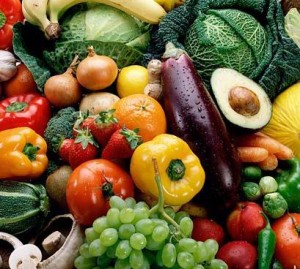
Fruits and veggies for Michigan schools: photo: hipmomsgogreen via Creative Commons
By EMMA OGUTU
Capital News Service
The fruits of a national drive to promote healthy eating habits in children will soon be enjoyed in more schools within the Great Lakes region.
Starting with the 2011-2012 school year, cafeterias will serve more fresh fruits and produce with funding from the U.S. Department of Agriculture’s Fresh Fruit and Vegetable Program.
More than $33 million has been disbursed to the Great Lakes region, with New York receiving the bulk at close to a fifth of it. Its obesity rate is 16th highest in the nation and third in the region with about 17 percent children tagged either obese or overweight.
Studies have linked diets devoid of veggies and fruits to obesity which is a precursor of cardiovascular diseases like high blood pressure, high cholesterol and type 2 diabetes. The latter is increasingly reported among overweight children and adolescents.
A 2010 study by the Trust for America’s Health, a national health advocacy group, found the nationwide average rate of obese and overweight children to be around 31 percent.
Illinois has the 4th highest percentage of obese children nationwide and is the highest in the Great Lakes region. More than 20 percent of that state’s children are either obese or overweight.
Here’s how each of the Great Lakes states stack up:
- New York gets $6.4 million toward the fresh fruits and vegetable program. Its obesity rate is 16th highest in the nation and third highest in the Great Lakes region.
- Illinois gets $4.8 million toward the program. Its obesity rate is fourth highest in the nation and the highest in the region.
- Pennsylvania gets $4.7 million. Its obesity rate is 25th highest in the nation and fourth in the region.
- Ohio gets $4.4 million. Its obesity rate is 12th highest in the nation and second highest in the region.
- Michigan gets $4 million. Its obesity rate is 41st highest in the nation and seventh highest in the region.
- Indiana gets $4.2 million. Its obesity rate is 27th highest in the nation and fifth highest in the region.
- Wisconsin gets $3 million. Its obesity rate is 36th highest in the nation and sixth highest in the region.
- Minnesota gets $2.9 million. Its obesity rate is 48th nationwide and the lowest in the region.
The program will both provide a ready market for growers and relieve some of the stresses associated with food costs for many families, said U.S. Sen. Debbie Stabenow, D-Mich.
“The program teaches our kids how to eat healthy and keeps them nourished throughout the school day so they can focus on what’s important,” said Stabenow, who is chair of the Agriculture, Nutrition and Forestry Committee.
The program began on a trial basis in four states to determine the best practices for increasing fruit and fresh vegetable consumption in schools. It expanded nationwide in select low-income elementary schools.
It’s also intended to combat obesity in children.
Obesity among 6 to 11-year-olds increased from 6.5 percent in 1980 to almost 20 percent in 2008 and rose to 18 percent from 5 percent among teens, according to the Centers for Disease Control and Prevention.
The states’ allocation comes from a national pool of $158 million in assistance for state agencies.
Last year, 133 elementary schools in Michigan were picked on the basis of the number of children eligible for free and reduced-cost meals, said Howard Leikert, state supervisor for the School Nutrition Program in the Department of Education.
Patti Miller, food service director for the Sturgis Public Schools in Michigan, said that although it’s too early to notice any changes in children’s weight, she’s observed a change in eating habits among the 900 participants in the district a year after joining the program.
“At first the kids didn’t care about things like radishes and broccoli, but with time we are seeing less and less vegetables left over,” she said. “The program is certainly allowing the kids to try many vegetables that they’d never have liked and liking them.”
“This is a much better deal instead of parents having to bring snacks to school, which may not always be a better option for the kids,” she said.